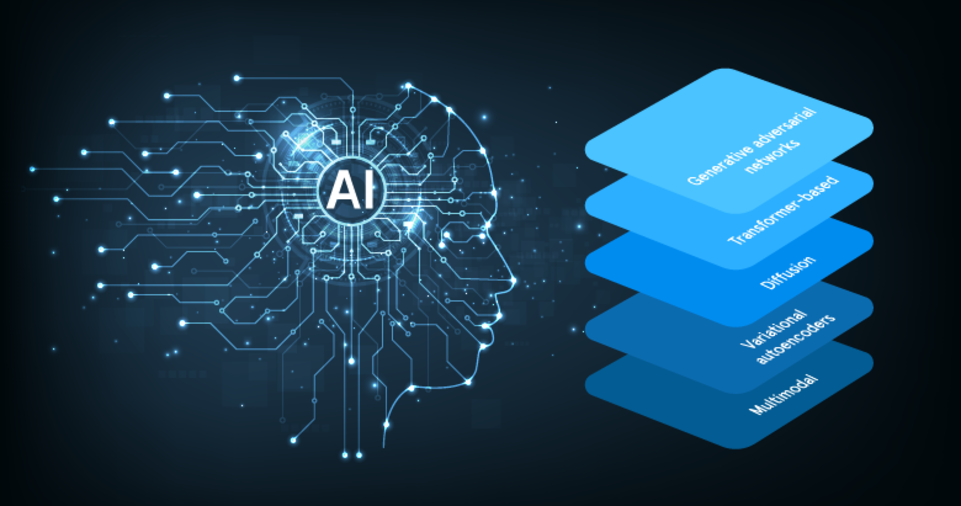Artificial Intelligence (AI) has become a transformative force, revolutionizing industries by enabling automation, enhancing decision-making processes, and delivering powerful predictive analytics.
The ability to train your own AI model, once a task limited to experts with extensive resources, is now accessible to anyone willing to learn.
Thanks to open-source tools, even those new to AI can embark on this journey.
This comprehensive guide walks you through every step of training an AI model—from problem definition to deployment—with detailed explanations and actionable advice.
By following these steps, you’ll gain a practical understanding of how to create AI models that address real-world problems effectively.
Whether you’re a tech enthusiast, a developer, or someone curious about the potential of AI, this guide will provide the knowledge and confidence to build impactful AI solutions.
Steps to Train an AI Model

Step 1: Define the Problem
Every successful AI project begins with a clear understanding of the problem you aim to solve.
This foundational step shapes the direction of your work and ensures your efforts are focused and effective. Let’s dive into the critical aspects of problem definition.
What is the goal of your model?
Start by identifying the specific task your AI model will perform.
Examples include:
- Image Classification: Categorizing images into distinct groups such as identifying animals or detecting objects.
- Sentiment Analysis: Analyzing text to determine whether opinions expressed are positive, negative, or neutral.
- Predictive Modeling: Forecasting trends, such as predicting stock prices or customer behavior.
Defining a clear goal ensures that your efforts are aligned with solving a meaningful problem.
What data do you need?
The quality of your data directly influences the success of your model.
Ask yourself:
- What format does the data need to be in (numerical, textual, images)?
- Where can you obtain the data (public datasets, APIs, custom collection)?
It’s essential to gather data that accurately represents the problem you aim to address.
How will you measure success?
Establish performance metrics that will help you evaluate your model’s effectiveness.
Common metrics include:
- Accuracy: The proportion of correct predictions.
- Precision and Recall: Metrics that provide insight into the model’s reliability and ability to capture relevant data.
- F1 Score: A harmonic mean of precision and recall, especially useful for imbalanced datasets.
Having well-defined success criteria ensures you can measure progress objectively.
Step 2: Collect and Prepare Data
Once you’ve defined the problem, the next critical step is collecting and preparing data.
Data is the backbone of AI, and the effort invested in this stage will significantly impact your model’s performance.
Data Collection
There are multiple ways to acquire data:
- Public Datasets: Platforms like Kaggle, Google Dataset Search, and UCI Machine Learning Repository offer a wealth of datasets for various applications.
- APIs: Access real-time data from services such as Twitter, OpenWeatherMap, or financial platforms.
- Web Scraping: Tools like Beautiful Soup or Scrapy allow you to extract data from websites efficiently.
- Custom Data: Collect your own data through surveys, experiments, or IoT sensors tailored to your project.
Data Preprocessing
Raw data is rarely perfect. Preprocessing involves cleaning and transforming the data to make it usable for training.
Key steps include:
- Handling Missing Values: Replace missing data with averages or predictions, or remove incomplete records.
- Eliminating Duplicates: Ensure the dataset is free of repeated entries that could skew results.
- Normalization and Scaling: Bring numerical data to a consistent range to avoid biases in model training.
- Tokenization: For text data, break content into smaller units, such as words or sentences, for analysis.
- Data Augmentation: For images, apply transformations like cropping, flipping, or zooming to increase dataset diversity.
Finally, split your dataset into:
- Training Set (70%): For training the model.
- Validation Set (15%): To fine-tune parameters.
- Testing Set (15%): To evaluate final performance.
Step 3: Choose an Open-Source Framework
Selecting the right framework simplifies model building and training. Open-source tools provide robust libraries and support for diverse AI applications.
Popular Frameworks
- TensorFlow: A comprehensive platform for machine learning, known for scalability and production readiness.
- PyTorch: Favored for its flexibility and dynamic computation graph, making experimentation intuitive.
- scikit-learn: Perfect for traditional machine learning tasks such as regression and clustering.
- Keras: A user-friendly API built on TensorFlow, ideal for beginners.
Choose a framework based on your familiarity and the complexity of your project.
Step 4: Build the Model
Designing and implementing the right architecture is crucial. The choice of architecture depends on your data type and problem domain.
Model Architectures
- Convolutional Neural Networks (CNNs): Ideal for image-related tasks like object detection.
- Recurrent Neural Networks (RNNs): Effective for sequential data such as time series or natural language.
- Transformers: State-of-the-art models for NLP tasks, e.g., GPT and BERT.
Here’s an example of creating a neural network in TensorFlow:
import tensorflow as tf
from tensorflow.keras import layers
# Define model architecture
model = tf.keras.Sequential([
layers.Dense(128, activation='relu', input_shape=(input_shape,)),
layers.Dense(64, activation='relu'),
layers.Dense(output_classes, activation='softmax')
])
# Compile the model
model.compile(optimizer='adam', loss='categorical_crossentropy', metrics=['accuracy'])
Experiment with different designs and activation functions to find the optimal architecture for your problem.
Step 5: Train the Model
With your model built, it’s time to train it using your prepared dataset.
Setting Parameters
Hyperparameters are crucial for effective training.
Key parameters include:
- Batch Size: Determines the number of samples processed per update.
- Learning Rate: Influences the size of updates to model weights.
- Epochs: Specifies the number of complete passes through the dataset.
Training Process
Start training with the fit function:
history = model.fit(X_train, y_train, validation_data=(X_val, y_val), epochs=10, batch_size=32)
Monitor metrics like loss and accuracy to ensure steady progress. Adjust hyperparameters as needed.
Step 6: Evaluate the Model
After training, evaluate your model’s performance on unseen data.
This step helps gauge how well your model generalizes.
test_loss, test_accuracy = model.evaluate(X_test, y_test)
print(f"Test Accuracy: {test_accuracy}")
Analyze the results to identify potential issues like overfitting or underfitting and take corrective action.
Step 7: Optimize the Model
Improvement is an ongoing process in AI development.
Consider these optimization techniques:
- Hyperparameter Tuning: Employ tools like Grid Search or Bayesian Optimization to refine settings.
- Regularization: Implement dropout layers or weight decay to reduce overfitting.
- Transfer Learning: Use pre-trained models for tasks with limited data.
Step 8: Deploy the Model
Deployment enables your model to generate predictions in real-world applications. Ensure the deployment process is seamless and efficient.
Save the Model
Save your trained model for reuse:
model.save("model.h5")
Deployment Strategies
- Web Applications: Integrate with frameworks like Flask or FastAPI to provide API access.
- Cloud Services: Leverage platforms like AWS, Google Cloud, or Azure for scalability.
- Containerization: Use Docker to package your model for easy deployment.
Step 9: Monitor and Maintain
AI models need continuous monitoring to remain effective:
- Performance Tracking: Use dashboards to track accuracy and other metrics over time.
- Periodic Retraining: Update the model with new data to adapt to changing conditions.
Essential Tools for Each Stage
- Data Handling: Pandas, NumPy, OpenCV
- Model Training: TensorFlow, PyTorch, scikit-learn
- Visualization: Matplotlib, Seaborn, TensorBoard
- Deployment: Flask, Docker, Kubernetes
Conclusion
Training an AI model may seem daunting, but with the right tools and approach, it’s a highly rewarding process.
By breaking the task into manageable steps and leveraging open-source resources, you can create powerful solutions to real-world challenges.
Embrace the learning journey, experiment boldly, and watch your ideas transform into impactful AI models.


